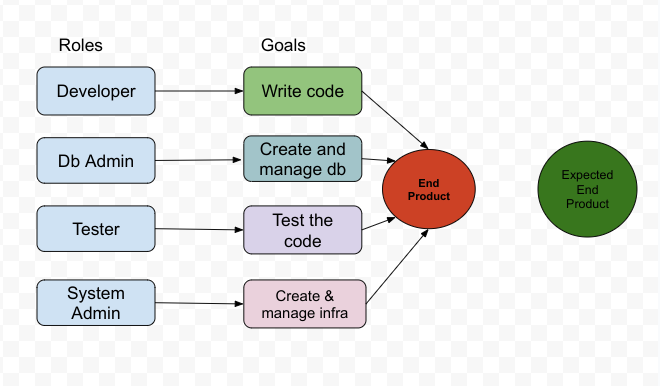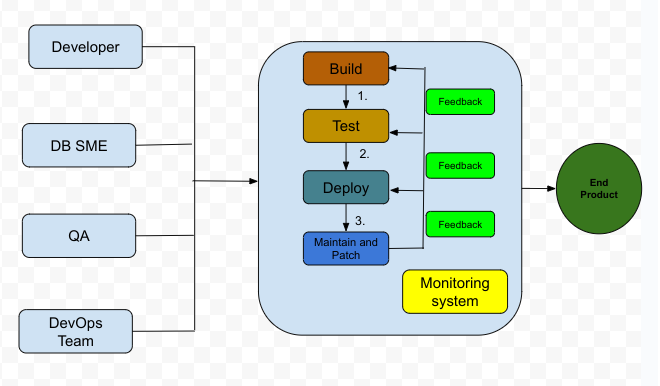Traditional Software Development Approach
In the Traditional Software Development Approach, there used to be a single team handling different aspects of the system. The project consisted of phases starting with requirement analysis, design, implementation & testing, deployment, operation & maintenance, and documentation. Jack-of-all team members would get assigned to each aspect of the cycle and work in silos without bothering about a shared objective. Developers used to maintain the code, infra provisioning was fragmented with almost no automation. Not-so-clear boundaries of roles performed by team members and lack of shared responsibilities led to communication gaps, inefficiencies, and a different end product. Project deliverables were merely a packaged application with data without much flexibility for the customers to change or enhance the features.

Lack of feedback and improvement via the involvement of end users usually resulted in difficulty in adapting to changes. The big cycle of software release without feedback led to the discovery of issues late in the cycle that would cause unsatisfied end customers. Roles were monotonous and siloed in such a way that learning opportunities were bound to the existing skill sets of the individual without much innovation.
DevOps Approach
DevOps involves automation, iteration, and a feedback loop. Silos are broken with DevOps communicating with all other teams working towards a shared goal. Roles are clearly defined for each team where they share a common goal.
DevOps is a culture that emphasizes preventing miscommunication, speeding up problem resolution, and delivering high-quality software quickly and efficiently.
In the below diagram, the DevOps team is responsible for writing the automation scripts to build, test, deploy, maintain, patch, and monitor the system.
The first step is Build where the executable is created from the code written by the developers, then test automation ensures different testing is implemented, after that the code is deployed, and finally, maintenance and patching are done if required. This cycle is iterative with feedback loops at each step. The feedback loop at each step allows improvement and fixes then and there.

As a part of automation, there are feedback loops in each iteration of automation that help get the stakeholders’ feedback and evaluate the system. Since there is iteration and feedback involved in a very early stage, the changes are easy to adapt and address.
DevOps as a culture gives opportunities to innovate and explore different tools & technologies in comparison to siloed roles in traditional software development.
 Welcome to diffstack!
Welcome to diffstack!